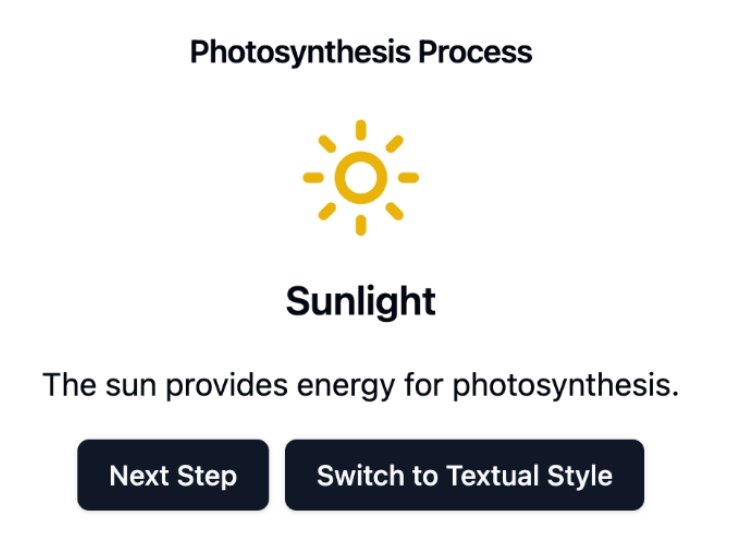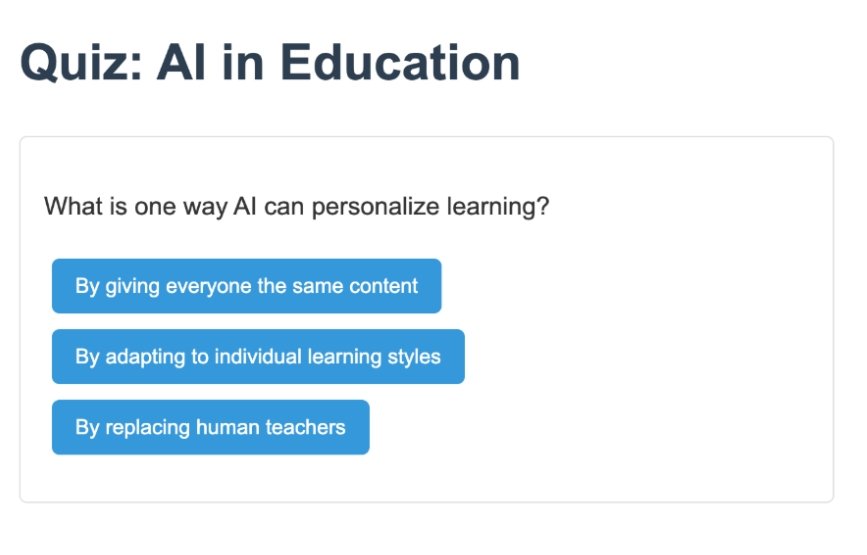The Future of Learning: How Multisensory AI Is Revolutionizing Education
Ever feel like traditional classrooms are stuck in the past? Like we’re still using outdated textbooks and passive lectures while the rest of the world is advancing with artificial intelligence, automation, and virtual reality?
According to AI experts, education isn’t just evolving—it’s undergoing a complete transformation. The integration of multisensory AI is reshaping the way we learn, making it more interactive, personalized, and accessible. This shift is not just about technology; it’s about redefining how knowledge is delivered and absorbed.
Personalized Learning That Adapts to You
Think about the last time you tried learning something new. Maybe you watched a video, listened to a podcast, or played around with an interactive app. The way we consume information has changed, yet classrooms have largely stayed the same.
Enter AI-powered personalized learning. Imagine a system that understands how you learn best. Whether you’re a visual learner who thrives on animations, an auditory learner who absorbs information through sound, or a hands-on learner who needs interactive exercises, AI can adapt to fit your style.
For instance, struggling with the concept of black holes? No problem! Instead of flipping through dense physics textbooks, AI-powered learning platforms can present the information in multiple ways:
A high-definition simulation of a black hole swallowing a star
An interactive model where you can manipulate gravitational pull and see how space-time bends
A gamified quiz that rewards you for solving physics puzzles
A podcast episode with leading astrophysicists explaining it in simple terms
Instead of forcing students into a one-size-fits-all mold, education is now becoming as unique as each learner.
Eliminating the Burden of Grading and Feedback
Let’s be honest—grading papers is no one’s favorite task. It’s time-consuming, tedious, and often subjective. But with AI stepping in, educators can focus more on teaching and mentoring rather than drowning in stacks of assignments.
Imagine an AI system that can analyze essays, assess grammar, and even provide suggestions for improvement, just like a human teacher. But it doesn’t stop there. AI can now evaluate:
Pronunciation and language skills in real-time
Mathematical problem-solving with step-by-step feedback
Presentations and speeches, even detecting tone and engagement levels
Sports techniques, analyzing posture, movement, and form
And the feedback? It’s not just a boring list of corrections. AI can provide audio feedback, video annotations, and even real-time coaching. This means students get immediate, constructive responses instead of waiting days or weeks for a teacher to grade their work.
No More Learning Barriers—AI Brings Knowledge to Everyone
One of the biggest challenges in education has always been accessibility. Not everyone has the same learning opportunities. But AI? It doesn’t care about location, disabilities, or financial barriers—it just wants to teach.
For visually impaired students, AI can convert images into rich, detailed audio descriptions or even create 3D-printed models of objects so they can experience them through touch.
For those with hearing impairments, AI-driven real-time captioning and even sign-language translation can make lectures more accessible than ever.
And for students with learning difficulties like dyslexia or ADHD, AI can adjust text readability, highlight key ideas, and even offer alternative teaching styles to ensure they don’t fall behind.
This is more than just cool tech—it’s an equalizer, giving every student the chance to thrive.
Virtual Field Trips: Exploring the World Without Leaving Your Seat
Remember the excitement of a school field trip? Now, imagine visiting the Great Wall of China, diving into the Mariana Trench, or walking through ancient Rome—all without leaving your classroom (or even your bed).
AI-powered virtual reality field trips allow students to explore world history, science, and culture like never before:
360-degree virtual environments make you feel like you’re actually there
AI guides answer your questions in real-time, making learning interactive
Augmented reality layers overlay facts and figures on real-world objects
It’s like stepping inside your textbook, where history, science, and geography come to life. No permission slips required!
Your Personal AI Tutor: Learning Without Limits
Imagine having a tutor that’s available 24/7, never gets tired, and can explain things in a hundred different ways until you finally get it. That’s what AI tutors bring to the table.
Need help with calculus at 2 AM? Your AI tutor is ready. Struggling to understand Shakespeare? It’ll rephrase passages until they make sense. The best part? It adapts to your learning pace, providing challenges when you’re ready and extra support when you need it.
Unlike traditional tutoring, AI doesn’t judge, doesn’t rush, and doesn’t get frustrated. It’s like having a personal study assistant, always there to help—whether you need a quick explanation or an in-depth breakdown.
AI as the Ultimate Study Buddy
Cramming for exams is tough, but AI can make it smarter. Instead of passively reading notes, AI can help you actively engage with the material:
Smart flashcards that adapt based on what you struggle with
Quizzes with instant feedback to reinforce learning
AI-generated summaries so you don’t have to read 50 pages of notes
No more mindless memorization. AI ensures you study smarter, not harder.
The Big Picture: What AI Can Tell Us About Learning
Education has always been a guessing game. What teaching methods work best? Why do some students struggle while others excel? AI is solving these mysteries.
By analyzing data from thousands of students, AI can:
Identify learning patterns and tailor content accordingly
Spot early signs of learning difficulties before they become major obstacles
Suggest new teaching strategies that maximize engagement and retention
This means better curriculums, smarter interventions, and more personalized learning at scale.
Challenges and Concerns: Keeping AI in Check
Of course, it’s not all smooth sailing. With great power comes great responsibility, and AI in education comes with challenges:
Privacy Issues – How do we ensure student data is protected?
Equal Access – Not all schools have the budget for advanced AI tools. How do we bridge the gap?
Human Touch – AI is amazing, but it can’t replace the warmth, empathy, and mentorship of a great teacher.
That’s why AI should enhance education, not replace it. It’s a tool, not a substitute for real human connection.
The Road Ahead: Education Like Never Before
So, where does all this lead? To a future where education is:
✔️ Personalized – Every student gets a unique learning experience
✔️ Interactive – No more passive learning; students engage with content
✔️ Accessible – No one is left behind, no matter their learning style or abilities
✔️ Data-Driven – Insights help educators refine teaching methods
This isn’t just about making learning cooler—it’s about making it better. AI is unlocking human potential in ways we’ve never seen before.
So, are you ready for the future of education? Now is the time to explore how AI can enhance learning, making it smarter, faster, and more inclusive.



